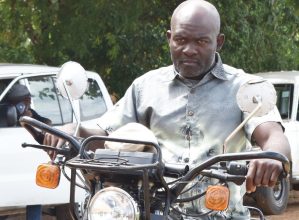Community’s passion for saving Dwambazi water tower

The fight is on to save one of Malawi’s most treasured national resources, the lush Dwambazi Forest Reserve in Nkhotakota, probably the only indigenous forest reserve still standing.
Residents from traditional authorities (T/A) Kanyenda and Kafuzila have abandoned their axes to combine forces in policing against further destruction that has eaten up the 36 600 hectares forest reserve.
Village head Matawale is leading his subjects to save the elevated forest that soaks up water during the rainy season and slowly releases it during the rest of the year.
Standing before the 24 square km regenerated forest, Matawale said the villagers’ main water tower, Dwambazi Forest Reserve, is being denuded which is worsening droughts thereby threatening lives and livelihoods.
“We used to have a huge forest cover but in the recent past, the forest has faced a serious threat of being wiped out by greedy people who raid it for its beautiful timber. Charcoal burners have also been exploiting the forest,” said Matawale.
Now the village forest committee is charging trespassers K5 000, and confiscating their implements such as axes and chain saws used to harvest timber.
In Chinkhaya Village, residents are in a bee-keeping business. So far the prospects look promising.
The strategy to save the forest reserve is working, said Stephano Mtonga, chairperson of Tiyesenawo Bee-Keeping Club.
“The bees need a lot of water flowing from the forest reserve. We need the forest to keep the bees. We are very optimistic that our lives will be transformed when we start harvesting honey,” said Mtonga after a tour of the bee-hives in group village head (GVH) Chinkhanya.
“The money realised from the honey sales will be shared among households participating in the project. This will raise their living standards as they will be able to purchase fertiliser and boost their crop harvests next season,” he added.
Another group of residents from Kasitu and Kadambo villages have embarked on fish farming which, when integrated with agriculture and rural fish farming, can socially and economically transform smallholder farmers in Malawi.
The initiatives stem from an observation of Wildlife and Environmental Society of Malawi (Wesm) which indicated that the 36 600 hectare forest reserve, gazetted in 1996 was severely affected by deforestation resulting from encroachment for farming, settlement and illegal timber sawing.
The villagers, led by Wesm and funded by Malawi Environmental Endowment Trust (Meet), analysed the state of the forest. They launched an initiative aimed at discouraging residents from depleting further the forest which has resulted in a massive environmental degradation.
The project involves helping communities living around forests to venture into alternative income generating activities in a bid to conserve water catchment areas.
One of the strategies that communities are engaged in is fish farming.
Melayi Banda vice-chairperson of the Kasitu Fish Farmers observed that the strategy will empower communities in the area to desist from earning a living from destruction of the forest rather that the forest supplies water for the growth of the fish.
“It will be a source of livelihood and will empower communities economically,” she said.
As of September 2006, Dwambazi Forest Reserve had a total of 145 encroaching households that had taken up an estimated 283 hectares, according to the 2009 Nkhotakota District Social Profile.
The forest area has some of the highest rainfall rates in Malawi and it is one of the largest water catchment areas where numerous rivers originate from, including Dwambazi, Mkoma, Khuyu, Luluzi and Chiphumbulu.
These rivers feed Lake Malawi and their waters directly benefit 15 000 residents and their animals in traditional authorities Kanyenda and Kafuzila.
Senior clubs coordinator for Wesm Dwangwa Yasin Rashid Malanduka said saving the forest from further destruction by involving communities will give ownership of the forest reserve to communities.
“The forest reserve provides a lifeline for the people here. It provides livelihood. They irrigate crops, draw water for household use. It is the source of many rivers,” said Malanduka, adding that the forest reserve also helps regulate weather in the area and is also a “carbon sink.”
One of the practical ways to combat climate change is to conserve forest and plant more trees in order to take more carbon out of the atmosphere.
While they are growing, trees use sunlight to absorb carbon dioxide from the atmosphere through photosynthesis and store it as carbon in the form of wood.
But Malawi is fast losing its national forest cover, latest statistics show.
A position paper prepared for the Coordination Union for Rehabilitation of the Environment (Cure) titled Status of Forest and Tree Management in Malawi, says in 1975, 47 percent of the territory in Malawi was classified as forest.
“But today, out of the total land area of 94 270 000 hectares of Malawi, 3 336 000 hectares, which represents 36 percent, is classified as forest,” reads the report.
Of this area, 15 percent is under natural woodlands on customary lands, 11 percent under national parks and game reserves and 10 percent under forest reserves and protected hill slopes. This is the highest deforestation rate in the Sadc region, representing a net loss of some 30 000 to 40 000 hectares per year of woodland in Malawi.





